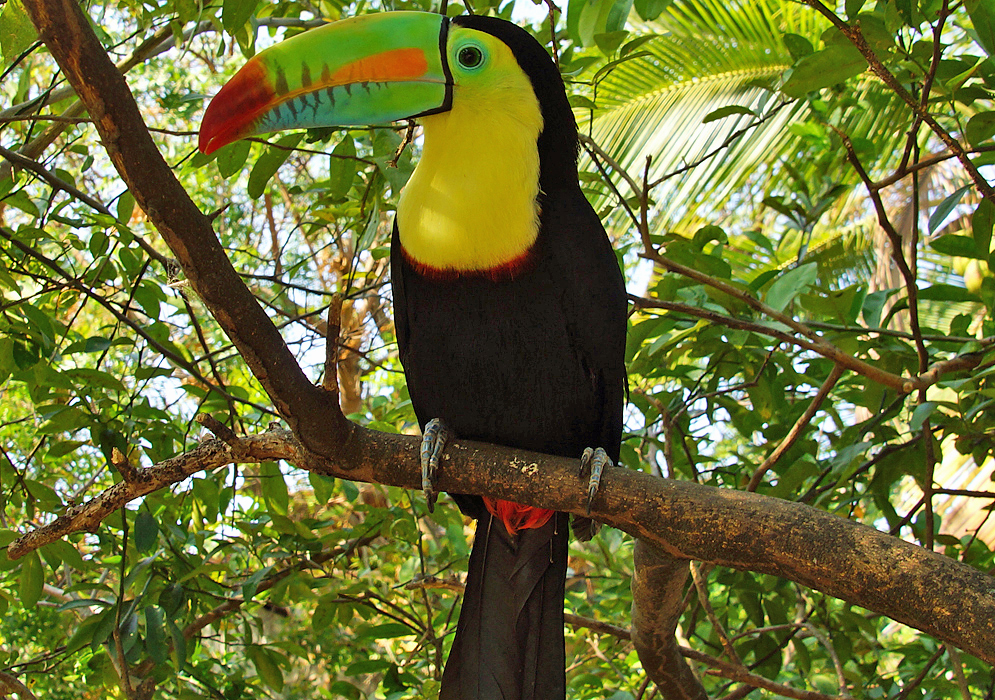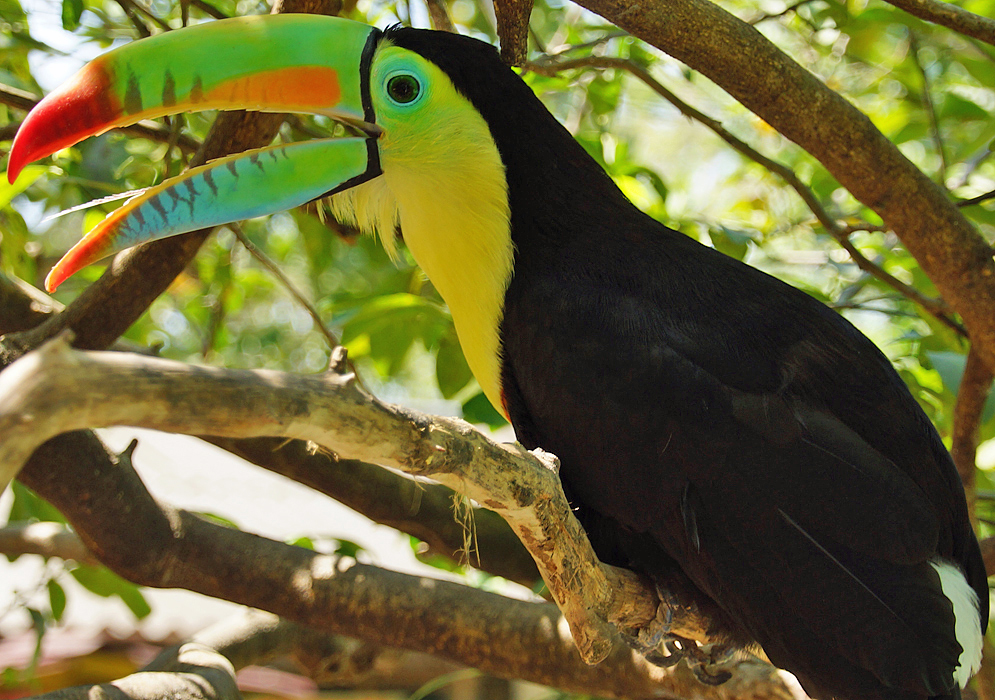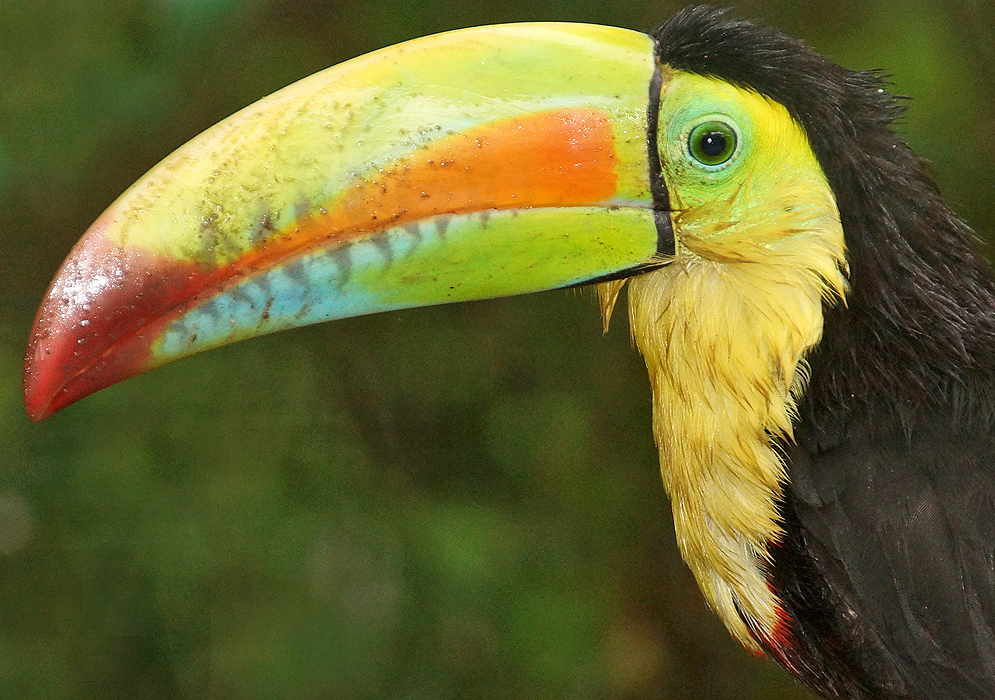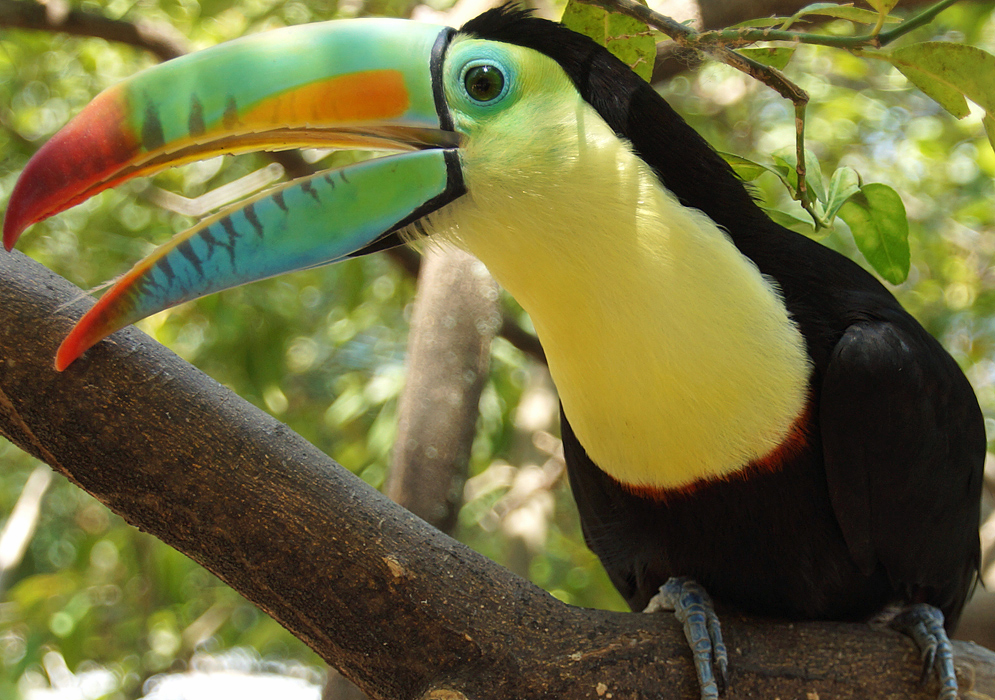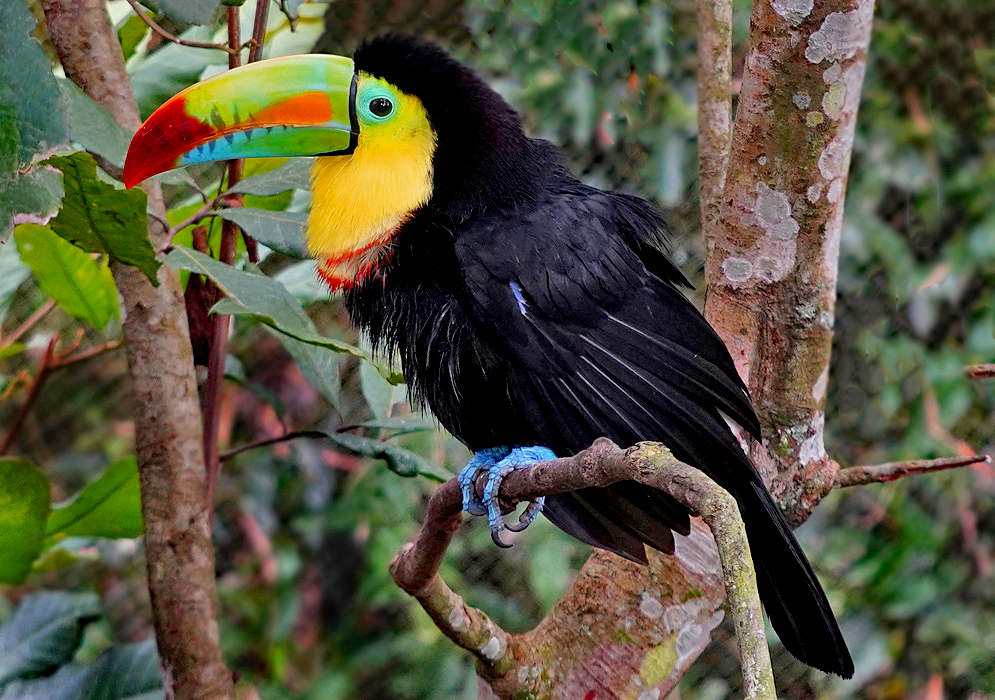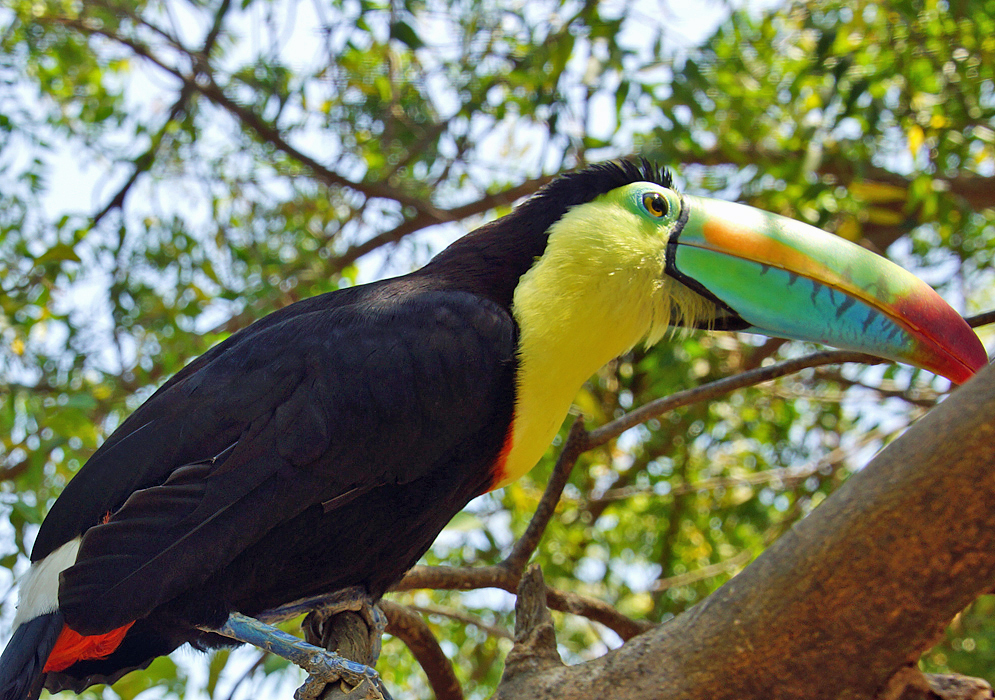This post has 11 Simple Fields-fields attached. Show fields.

The Keel-billed Toucan, is a vibrant and distinctive bird that inhabits the tropical jungles stretching from southern Mexico to Colombia, including Northeast Venezuela. This species, is the national bird of Belize, thrives in lowland forests and forest borders, adapting well to various habitats from tropical lowland to mid-elevation cloud forests. Measuring approximately 20 inches in length, the Keel-billed Toucan is one of the larger toucan species, weighing between 4.7 to 8.8 pounds. Its most striking feature is its large, colorful bill, which can be one-third of its body length. The bill is predominantly green, with bright orange, red, and blue accents. This remarkable bill is surprisingly lightweight, being hollow and bone-reinforced, and edged with tooth-like ridges. The body of the toucan is predominantly black, with a bright yellow bib and cheeks, a white rump, and brilliant red undertail coverts. The skin around their eyes is pale blue, and they have blue legs with a zygodactyl toe arrangement (two toes forward and two toes back), facilitating movement in their arboreal habitat. Keel-billed Toucans are sociable birds, often seen in canopy-foraging flocks of 6 to 22 individuals. They roost and nest in natural or woodpecker-created tree cavities, with several birds often sharing the same space. These toucans are not adept fliers, preferring to hop from branch to branch in the forest canopy. Their flight is characterized by a pattern of rapid flapping followed by gliding. The diet of the Keel-billed Toucan primarily consists of fruit, but it is an omnivore and also consumes eggs, insects, lizards, snakes, and small birds. The bird uses its dexterous bill to snip fruits, tossing them into the air before catching and swallowing them whole. This species plays a vital role in seed dispersal through its frugivorous diet, helping to maintain the forests it inhabits. Keel-billed Toucans are apparently monogamous and exhibit interesting nesting behaviors. They lay clutches of 2 to 4 white glossy eggs in tree cavities and can have up to 2 or 3 broods per year. Both parents share the responsibility of incubating the eggs and feeding the chicks, which are altricial and remain in the nest for 8 to 9 weeks for their beaks to fully form. The Keel-billed Toucan is classified as a species of "Least Concern" with an estimated population of over individuals.
